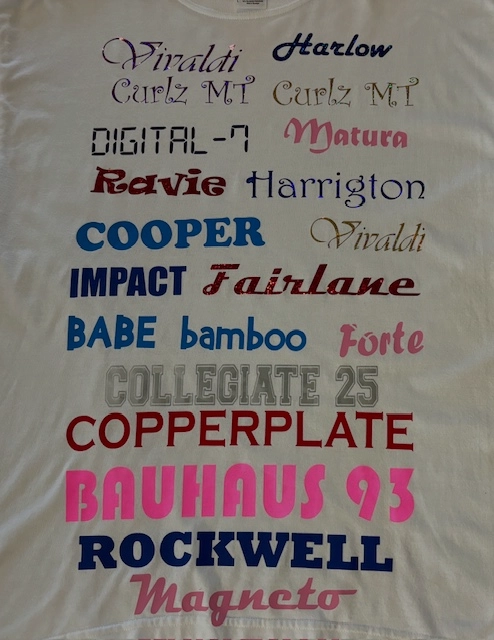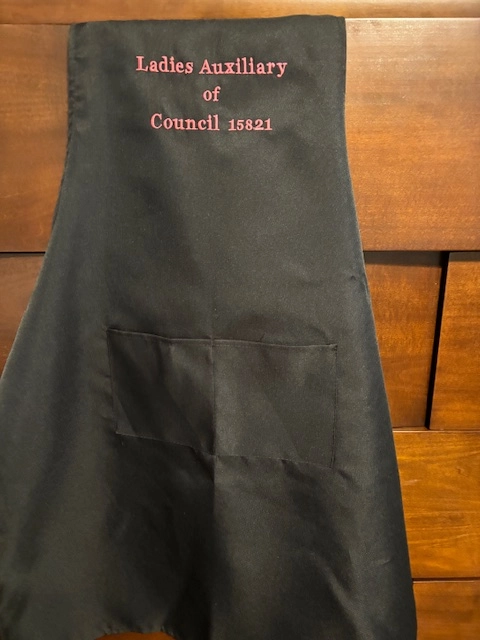Heat Transfer on T-Shirts and Aprons - Custom-made Styles and Logos
Heat Transfer on T-Shirts and Aprons - Custom-made Styles and Logos
Blog Article
The Art of Custom-made Embroidery: Unlocking the Keys to Creating Special and Memorable Designs
The tricks to producing custom embroidery layouts that astound the eye and leave a long-term impact lie in a delicate balance of strategy, imagination, and focus to information. As we delve right into the globe of customized needlework, we discover the nuanced interplay in between string choice, stitch complexity, and layout personalization that boosts a simple garment to a work of art.
Selecting the Right Embroidery Threads
When selecting embroidery threads, what crucial factors should you take into consideration to ensure the very best outcomes for your custom designs? The selection of needlework thread is important in identifying the final outcome of your embroidered layout. One of the primary considerations is the product of the string. Different materials such as cotton, polyester, rayon, and silk offer varying degrees of luster, toughness, and appearance. It is necessary to select a string material that enhances the textile you are stitching on and lines up with the desired look of the layout.
In addition, the weight or density of the thread plays a substantial role in the appearance of the embroidery. Thicker threads can include dimension and appearance to your design, while finer threads are perfect for complex details and tiny message. Furthermore, taking into consideration the shade fastness and washability of the thread is essential to ensure that your custom designs maintain their high quality and vibrancy with time. By meticulously examining these variables and choosing high-quality threads that meet your details needs, you can boost the visual charm and longevity of your embroidered creations.
Exploring Different Stitch Strategies
To look into the realm of 'Exploring Various Stitch Strategies', one should comprehend the complexities and subtleties that each stitching method brings to the art of embroidery. Various stitch techniques not only include visual interest yet also add to the total texture and dimension of the design. One popular stitch technique is the satin stitch, which entails closely stuffed parallel stitches to develop a smooth and shiny surface, perfect for loading in shapes and producing strong describes.
On the various other hand, the backstitch is a functional technique frequently made use of for laying out and including fine details. It includes stitching backward to create a strong line of embroidery. Furthermore, the French knot stitch adds a responsive element to styles, excellent for producing distinctive accents like flower facilities or attractive touches.
Checking out different stitch techniques permits embroiderers to have fun with light, shadow, and depth within their styles, raising the visual appeal click to read more and imaginative top quality of their embroidery jobs. By mastering various stitching methods, one can unlock endless possibilities for creating distinct and memorable personalized needlework items.
Incorporating Personalized Design Elements
Having explored the ins and outs of various stitch techniques such as the satin stitch, backstitch, and French knot, the focus now moves towards integrating customized layout elements in customized needlework projects. Customized layout components play a critical role in making embroidery tasks absolutely distinct and remarkable.
One more means to integrate individualized layout elements is by including symbols or motifs that hold special definition to the recipient or show their passions and character. For example, including a favorite flower, animal, or hobby-related icon can make the needlework design more significant and individualized. Additionally, picking colors that resonate with the recipient or straighten with the intended theme can even more boost the customization of the needlework project.
Grasping the Art of Shade Sychronisation

One secret facet of shade coordination is recognizing shade concept. This consists of knowing how different colors communicate with each other, the emotions they share, and just how they can be incorporated to develop visually attractive designs. By applying color concept principles, embroiderers can create unified shade combinations that enhance the general appearance of the design.
Furthermore, paying interest to comparison is critical in shade coordination. Utilizing contrasting colors can help particular aspects of the design pop, boost readability, and produce an aesthetically dynamic needlework item. By mastering the art of color coordination, embroiderers can raise their designs and create memorable pieces that reverberate with mens bespoke suit customers and audiences alike.
Enhancing Texture With Advanced Needlework Stitches

French knots, for instance, are best for adding tiny, raised dots to Learn More Here your style, mimicking the appearance of beads or producing a distinctive surface area. Bullion knots, on the other hand, can be utilized to produce twisted, ropelike aspects that add a lavish feeling to the embroidery. Seed stitching involves little, scattered stitches that can fill out areas with a speckled texture, while turkey job produces fluffy, dimensional accents evocative animal fur or vegetation. Trying out these advanced embroidery stitches permits you to press the limits of traditional needlework and produce really distinct and aesthetically enticing structures in your layouts.
Conclusion
To conclude, the art of custom needlework includes a combination of choosing the best strings, discovering different stitch techniques, incorporating personalized design elements, understanding color sychronisation, and enhancing texture with innovative stitches. By recognizing and implementing these crucial elements, embroiderers can develop distinct and unforgettable designs that display their imagination and ability. Embroidery enthusiasts can open the tricks to developing attractive and custom pieces that attract attention and leave a long-term impact.
Report this page